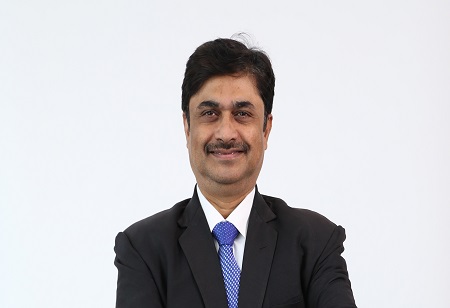
In an interaction with Industry Outlook, Raghu Muttige, Director and Head of Dana India Technical Centre shares his views on how the agricultural machinery market is evolving with advanced automation, sustainable solutions, and IoT integration, the major challenges encountered in manufacturing drive and motion solutions tailored for the unique requirements of the agriculture industry and more.
The agricultural machinery market is evolving with advanced automation, sustainable solutions, and IoT integration to enhance productivity, resource efficiency, and data-driven decision-making for farmers. How do you see the current evolution of this market?
Agricultural machinery is a leading segment in global technological evolution before any other segment. It is quite encouraging to see now that technological evolution is getting more traction with even small OEMs and start-ups. The increased traction in technological evolution is due to growing income per capita and increasing urbanization. Productivity, reliability, safety, and comfort are pushing the technological growth in the agricultural segment and farm mechanization. For instance, India has just around 45% farm mechanization and in some specific areas, the numbers are insignificant so the evolution of advanced technologies shall play a key role in the overall growth of agricultural machinery.
What are the major challenges encountered in manufacturing drive and motion solutions tailored for the unique requirements of the agriculture industry, such as withstanding dust, debris, and extreme weather conditions?
The farming process requires equipment to be accurate and resilient; components must undergo stringent quality control for the system to work properly. Dana products are known for their performance and reliability in diverse operating environments ranging from wet and abrasive paddy fields of India and Southeast Asia to frigid Arctic areas of Canada. Some of the major challenges are ensuring sealing integrity, ensuring compatible lubricant grades suitable to operating environments, thermal management, etc. To elaborate further on sealing integrity, we do a detailed study of the applications and environment in which these machines operate and come up with the right product that can perform in fluctuating weather conditions ranging from -40 degrees C to 50 degrees C ambient temperatures. Our products are designed to perform efficiently in a wide range of agricultural applications offering high reliability and superior performance.
How can farm equipment manufacturers address the need for flexibility and adaptability in their solutions to accommodate varying farming practices, crop types, and regional differences in agricultural processes?
We don’t want to speak for the OEMs but some of the areas that we are monitoring include telematics and fleet management, better maneuverability, ease of using automatic functions and guidance, etc. Some of the needs are region-specific and have to be addressed, for instance, drivelines used in tractors used for rice cultivation require special sealing but the same technology could be extended for another application to offer higher life. Efficiency and reliability are key especially when it is operated in a small land holding, so to have features like better maneuverability that offers short turning radius and comfort will enable the farmer to have better productivity.
What measures are being taken by manufacturers to optimize the power efficiency and energy consumption of agricultural machinery, taking into account the sustainability and environmental impact considerations in modern agriculture?
Sustainability is part of our values and we are continuously working to identify ways of reducing power losses and improving product efficiency. The current Dana propulsion product offerings are already among the best in class. However, to continually raise the bar, Dana is evaluating multiple technologies like tribological improvements, improved/alternative lubricant products, innovative product architecture, etc. The process is also accelerated by our engagement with some OEMs on e-Propulsion programs and for these programs, energy efficiency is one of the key deliverables. Another area of focus on environmental impact is that we have a stringent procedure for eliminating lubricant leakage/seepage.
We use cookies to ensure you get the best experience on our website. Read more...